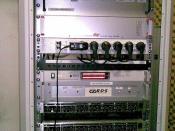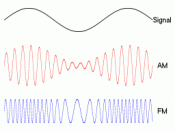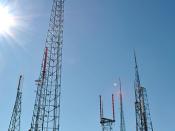Wavelength and its relation to other wavelengths in the electromagnetic spectrum
Radio waves have the biggest and longest wavelengths in the Electromagnetic spectrum. These waves can range from as long as one football pitch to as small as a football. All radios today, however, use continuous sine waves to transmit information (audio, video and data). The reason why we use continuous sine waves today is because there are so many different people and devices that wish to use radio waves at the same time.
Interesting facts about radio waves
Radio astronomers use diesel cars as gasoline powered car?s spark plugs can cause interference to radio waves, just like a Hoover interferes with the television reception. If humans could see radio waves, there would literally be thousands of waves around you right now. These vary from radio broadcasts, TV transmissions and other things such as emergency service radios, the list is endless.
Common frequency bands include the following:
AM radio - 535 kilohertz to 1.7 megahertz
Short wave radio - bands from 5.9 megahertz to 26.1 megahertz
Citizens band (CB) radio - 26.96 megahertz to 27.41 megahertz
Television stations - 54 to 88 megahertz for channels 2 through 6
FM radio - 88 megahertz to 108 megahertz
Television stations - 174 to 220 megahertz for channels 7 through 13
There are hundreds of frequencies for example:
Garage door openers, alarm systems, etc. - Around 40 megahertz
Standard cordless phones: Bands from 40 to 50 megahertz
Baby monitors: 49 megahertz
Radio controlled airplanes: Around 72 megahertz, which is different from...
Radio controlled cars: Around 75 megahertz
Wildlife tracking collars: 215 to 220 megahertz
MIR space station: 145 megahertz and 437 megahertz
Cell phones: 824 to 849 megahertz
New 900-MHz cordless phones: Obviously around 900 megahertz!
Air traffic control radar: 960...



Nice Coverage Of the Topic
Very well written this will provide as notes for me for Physics. THANX!
3 out of 3 people found this comment useful.